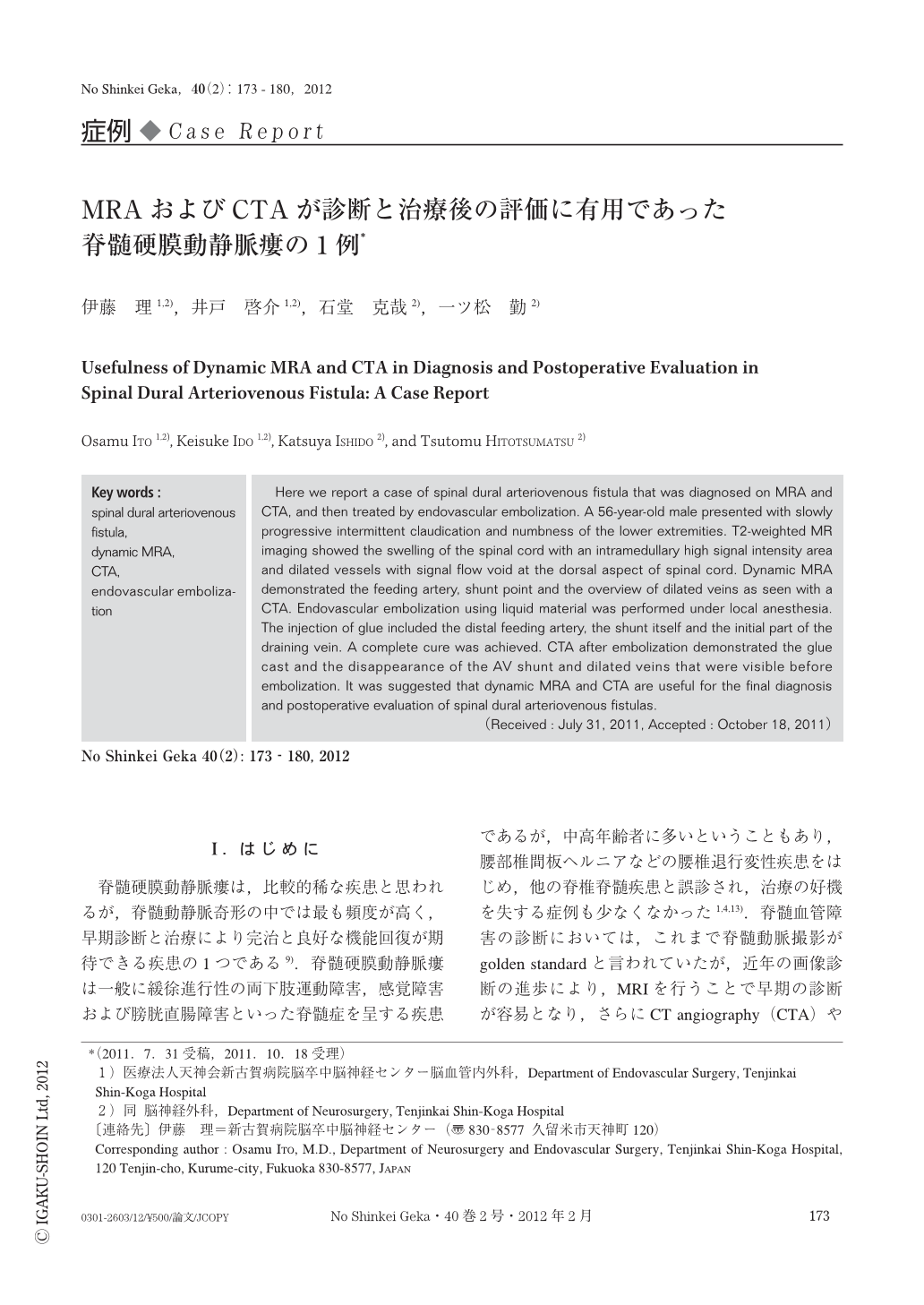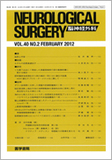Japanese
English
- 有料閲覧
- Abstract 文献概要
- 1ページ目 Look Inside
- 参考文献 Reference
Ⅰ.はじめに
脊髄硬膜動静脈瘻は,比較的稀な疾患と思われるが,脊髄動静脈奇形の中では最も頻度が高く,早期診断と治療により完治と良好な機能回復が期待できる疾患の1つである9).脊髄硬膜動静脈瘻は一般に緩徐進行性の両下肢運動障害,感覚障害および膀胱直腸障害といった脊髄症を呈する疾患であるが,中高年齢者に多いということもあり,腰部椎間板ヘルニアなどの腰椎退行変性疾患をはじめ,他の脊椎脊髄疾患と誤診され,治療の好機を失する症例も少なくなかった1,4,13).脊髄血管障害の診断においては,これまで脊髄動脈撮影がgolden standardと言われていたが,近年の画像診断の進歩により,MRIを行うことで早期の診断が容易となり,さらにCT angiography(CTA)やMR angiography(MRA)を行うことで侵襲的な脊髄動脈撮影を行う前に確定診断まで可能となりつつある6,12,14).
今回,MRI,MRAおよび3D-CTにて責任血管の診断も含めて確定診断ができ,塞栓術後の評価にCTAが有用であった症例を経験したので報告する.
Here we report a case of spinal dural arteriovenous fistula that was diagnosed on MRA and CTA,and then treated by endovascular embolization. A 56-year-old male presented with slowly progressive intermittent claudication and numbness of the lower extremities. T2-weighted MR imaging showed the swelling of the spinal cord with an intramedullary high signal intensity area and dilated vessels with signal flow void at the dorsal aspect of spinal cord. Dynamic MRA demonstrated the feeding artery,shunt point and the overview of dilated veins as seen with a CTA. Endovascular embolization using liquid material was performed under local anesthesia. The injection of glue included the distal feeding artery,the shunt itself and the initial part of the draining vein. A complete cure was achieved. CTA after embolization demonstrated the glue cast and the disappearance of the AV shunt and dilated veins that were visible before embolization. It was suggested that dynamic MRA and CTA are useful for the final diagnosis and postoperative evaluation of spinal dural arteriovenous fistulas.

Copyright © 2012, Igaku-Shoin Ltd. All rights reserved.


